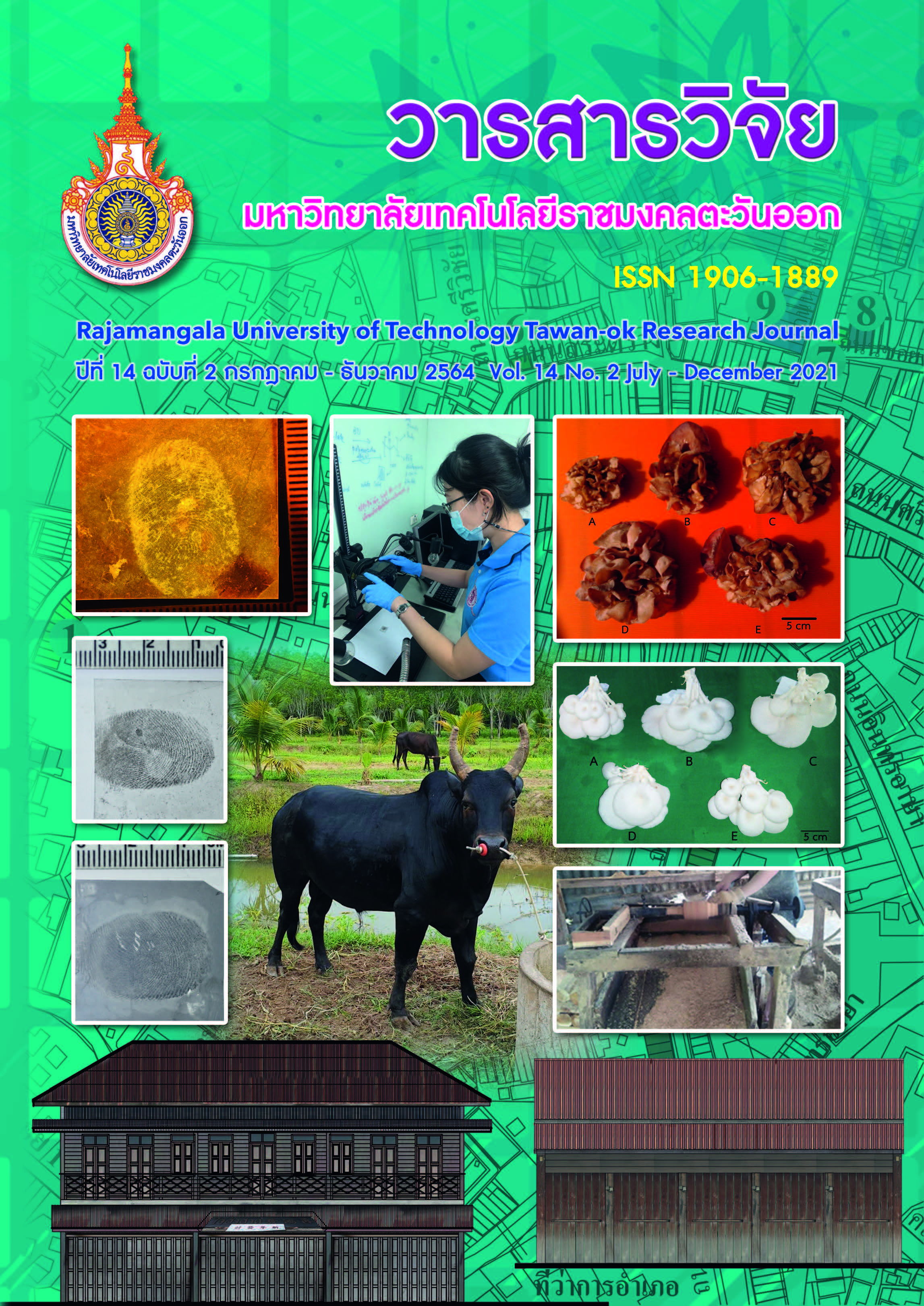Efficiency in Different Concentrations of Lactic acid Compared to 10% Formalin as a Preservative in Forensic Autopsy
Main Article Content
Abstract
The objectives of this research are: 1) to compare the efficiency in different concentration of lactic acid and 10% formalin as a preservative in forensic autopsy and 2) to compare the efficiency between liver and kidney in forensic autopsy. This research was implemented in the form of posttest-only control group design and the simple random sampling by the lottery method was used to select 30 cases. In the data collection, the tissue autopsy of livers and kidneys was collected and prepared by using tissue processing method and Hematoxylin and Eosin Staining technique. Then the data were analyzed in descriptive statistics, i.e. frequency, percentage, means, standard deviation; and in inferential statistics, i.e. t-test independent, one-way ANOVA and the Scheffe’s Post Hoc Comparison. The results of this research are as follows 1) Different types of solutions had a different efficiency of tissue autopsy at the significance level of 0.01. Lactic acid with 0.2% concentration and 10% formalin had the most efficiency of the tissue autopsy at the mean of 4.00, followed by lactic acid with 0.4% concentration at 3.97, lactic acid with 0.3% concentration at 3.92 and lactic acid with 0.1% concentration at 3.67, respectively. In the comparison of economic efficiency, lactic acid with 0.2% concentration was cheaper than 10% formalin and lactic acid is nontoxic to the respiratory system and carcinogen to human. 2) Regarding the efficiency between liver and kidney in forensic autopsy, lactic acid with different concentrations and 10% formalin were found different at the significance level of 0.01. Accordingly, the kidney in forensic autopsy was efficiency maintained at the mean of 3.95, whereas the liver in forensic autopsy was efficiency maintained at the mean of 3.87.
Article Details

This work is licensed under a Creative Commons Attribution-NonCommercial-NoDerivatives 4.0 International License.
References
Chaniphun, B. 2003. Magazine topic: Know before you eat formalin and food. Moh-Chao-Ban Magazine. 165. (in Thai)
Cogliano, V., Grosse, Y., Baan, R., and et al. 2005. Meeting report: summary of IARC monographs on formaldehyde, 2-butoxyethanol, and 1-tert-butoxy-2-propanol. Environmental Health Perspectives. 113(9): 1205-1208.
Davenport, H. A. 2009. Acid Versus Neutral Formalin Solution as a Neurological Fixative. Stain Technology. 9(2): 49-52.
Kanokwan, Y. 2013. Production of lactic acid from starches with lactic bacteria. Applied Microbiology Journal. 40(4): 40-46. (in Thai)
Kiernan, J. A. 2008. A system for quantitative evaluation of fixatives for light microscopy using paraffin sections of kidney and brain. Biotechnic and Histochemistry. 84(1): 1-10.
Kim, K.-H., Jahan, S. A., and Lee, J.-T. 2011. Exposure to Formaldehyde and Its Potential Human Health Hazards. Environmental Science and Health. 29(4): 277-299.
Orose, R. 2017. Prolonged storage life of vienna Sausage using lactic acid. Master's thesis. Deparment of Food Technology Chulalongkorn University, Bangkok. (in Thai)
Panic, W. 2021. Biological evidence. Microbiology Journal. The institute for the Promotion of Teaching Science and Technology. http://biology.ipst.ac.th/?p=102. Accessed 3 January. 2021.
Strategy and Planning Division. 2017. The importance of death and Cause of Death. Death Certificate Record Guide Ministry of Public Health. 1(1): 1-3. (in Thai)
Suchirat, K. 2010. Reduction of microbial load on chicken meat and products using non-hazardous organic compound in production line. Master's thesis. Deparment of Microbiology King Mongkut's University of Technology Thonburi, Bangkok. (in Thai)


